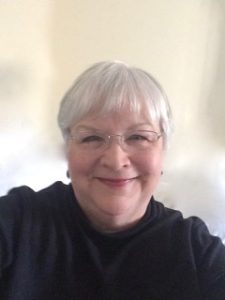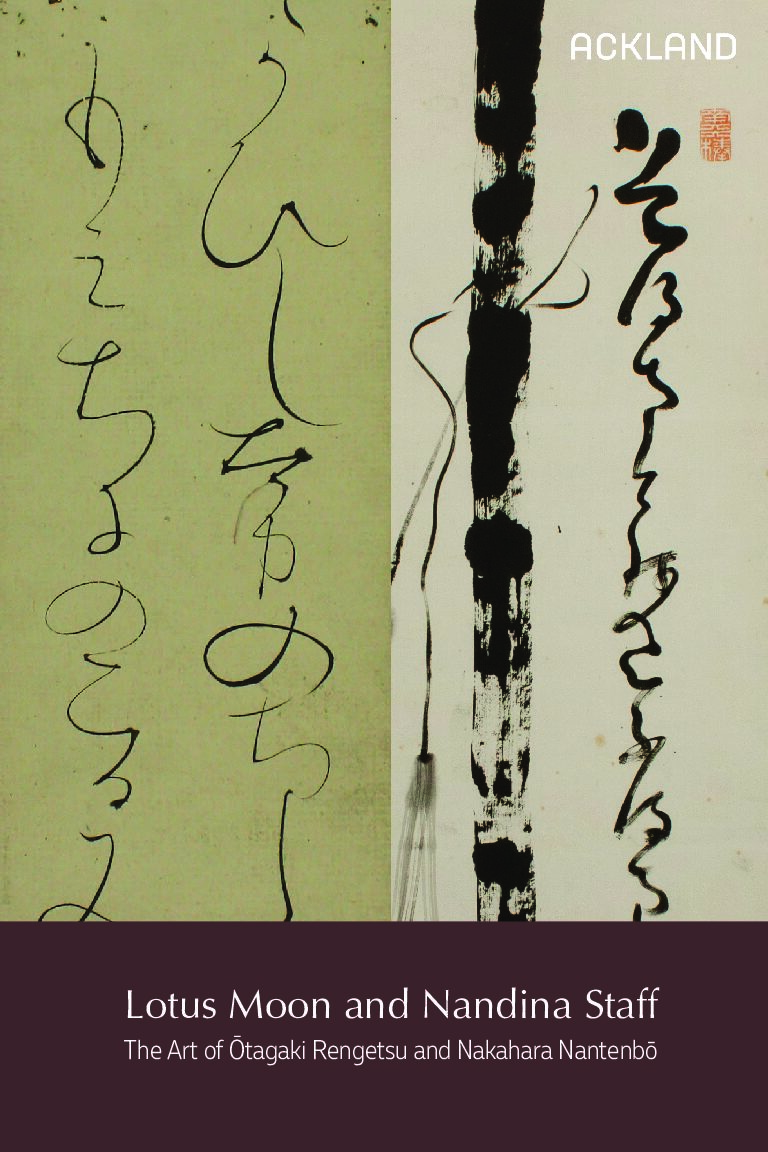Springtime in Verse is a series of blog posts inviting you to learn and gather around poetry with the Ackland. Today’s featured poet is Mary Kendall.
Mary has shared a selection of her tanka poems in celebration of the Museum’s current exhibition, Lotus Moon and Nandina Staff: The Art of Ōtagaki Rengetsu and Nakahara Nantenbō. Follow our blog throughout the month of April to enjoy more original works by celebrated North Carolina poets. We are so pleased to present to you this exhibition and the original works written by poets from the local community.
plum blossoms—
watching you
struggle for so long
I remember how brief
a season is
all those words
I wish I could forget . . .
the smoothness
of dark pebbles
clutched in my hand
from slabs
of common clay
delicate cups
that hold the scent
of jasmine tea
whistling wings
of Tundra swans
over the marshes
. . . what is this power
you hold over me
past the edge
of darkness, an owl swoops
and grabs a vole
. . . reckoning comes
at lightning speed
the pale twilight
of a hospital room
fading, fading
as you said
your last goodbyes
a soft rain falls
as you work in the garden …
what I’d give to read
the chapters of your life
you never share
stopping to study
fritillaries, tulips
and jonquils –
the sudden way
you take my hand

Mary Kendall lives in Chapel Hill, North Carolina. She is a retired reading teacher and the author of two books, A Giving Garden, a children’s poetry/photography book (co-authored with Debbie Suggs) and Erasing the Doubt, a chapbook of free verse (Finishing Line Press, 2015).
In 2023, her third book, The Last Camellia, will be published. It is a collection of both tanka and haiku as well as some haiga.
Mary has a poetry blog called A Poet in Time.
Having written poetry for many years, Mary fell in love with Japanese short form poetry about twelve years ago. Tanka is her great love, a form that feels most natural to her as a lyric and meditative poet, but she loves the challenge and discipline of writing haiku and senryu as well. She creates haiga and tanka and has published a good number of each. Her poetry has been published in many print and online journals such as The Heron’s Nest, Acorn, Modern Haiku, Presence, Blithe Spirit, Eucalypt, Kokako, Wild Plum Journal, A Hundred Gourds, Ribbons, Gusts, Skylark, Failed Haiku, hedgerow, Prune Juice, Under the Basho, and Rattle. Some of her poems have received various honors in poetry contests and one was nominated for the Pushcart Prize.
APRIL POETRY PROGRAMS AT THE ACKLAND
We invite you to share your own poems inspired by Rengetsu’s and Nantenbō’s artworks on display. In the coming weeks, the Ackland will host several opportunities to gather around poetry writing, recitation, and scholarship.
On Friday, April 14, the Ackland will remain open late until 9:00 p.m. Listen to local poets perform waka poetry, learn to craft your own waka poems, and share your compositions at our open mic. Learn more here:
https://events.ackland.org/event/2nd-friday-artwalk-3/
On Saturday, April 15, the Ackland will host a free, drop-in poetry writing program at Carolina’s Coker Arboretum’s central lawn. Visit any time from 10:30 a.m. – 1:30 p.m. to enjoy the serene landscape and the pleasure of crafting poetry to hang amongst the blossoms. Your poems will remain displayed in the gardens through April 24. Find out more here:
https://events.ackland.org/event/ackland-presents-poetry-at-the-arboretum/
Also on Saturday, April 15, the Ackland will host a one-day public symposium considering the two artists of Lotus Moon and Nandina Staff. The symposium will look at the work of artists Ōtagaki Rengetsu and Nakahara Nantenbō from multiple perspectives, including Japanese Buddhism, the materiality and functions of the work, the role of literature, and the aesthetics of calligraphy. Capacity is limited. Register here:
https://events.ackland.org/event/rengetsu-and-nantenbo-calligraphy-and-context/
ABOUT THE EXHIBITION
Lotus Moon and Nandina Staff presents and contrasts the work of two major Japanese artists of the nineteenth and early twentieth centuries, taking its title from translations of their names. Ōtagaki Rengetsu (1791-1875) was a Buddhist nun who became very well known as an important poet focusing on the traditional waka verse form, rendering her poems in elegant but strong calligraphy on paper and on ceramics that she often formed herself; Nakahara Nantenbō (1839-1925) was an influential and strict Zen Master famous for his energetically and expressively brushed calligraphy and paintings.



Congratulations 🎉🎉
I’ve read them each several times
so meaningful. I remember you telling me about this thanks for sharing.
Love ya,
Bsbe
So beautiful, so insightful of inner feelings of deep love and personal loss.